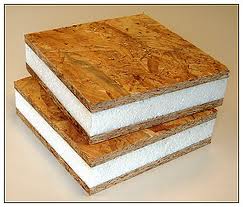Green Building Blocks: Pushing the Envelope
To this point, most of our Green Building Blocks have dealt with construction techniques and products that are typically associated with traditional home building, only with a special focus on achieving a higher degree of efficiency and sustainability. But the state of green architecture is constantly moving forward, challenging old ideas and concepts with new ideas to attain ever-higher levels of energy savings and resource efficiency.
These newer, alternative forms of home construction are pushing the envelope in terms of how efficient a structure can be, and that is one reason why this particular building block is perched up at the top of our Green Building Block wall. Change comes at a price, and pushing the green home envelope isn't cheap. If you are designing a green home, you should first of all focus on the Building Blocks that rank lower on the wall; they'll set the foundation for efficiency and sustainability by being relatively easy to accomplish and less expensive.
21st Century Structural Systems
New homes are almost always built around a traditional stick-built frame. This frame is then covered and filled with insulating materials and wall coverings to close in the interior airspace. Done right, a stick-built home can be an incredibly efficient structure; done wrong, and issues like air and moisture infiltration can lead to higher energy costs and air quality issues.Some green home builders are turning to newer, time-tested alternative structural systems that replace the stick-built frame and create an incredibly efficient and durable house.
Structural Insulated Panels (SIPs)
Foremost among these newer structural systems are SIPs, or Structural Insulated Panels. SIPs consist of an insulating foam core sandwiched between two facings of oriented strand board. Created to be an all-in-one wall or roofing product, SIPs have several distinct advantages over stick-built framing with traditional insulation and facing materials.First among SIPs advantages is superior energy-efficiency. SIP homes use about half the energy of stick-built homes. A 50% reduction in heating and cooling costs translates to significant cost savings over the life of the home.
SIPs also provide superior protection against air infiltration. Due to the lack of gaps and thermal bridging associated with framed homes, SIPs are 15 times more airtight thanks to the continuous insulation of the SIPs' foam insulating core. SIPs' incredible performance allows a home to stay comfortable year-round with smaller HVAC systems, further driving down energy costs.
SIPs also allow for better control of air ventilation, letting the HVAC system filter indoor air allergens and pollutants, and dehumidifying incoming air. This reduces moisture and mold growth.
In addition to their energy-saving insulating qualities, SIP walls and ceilings are extremely strong structures, ideal for use in areas prone to high, damaging winds.
Other Types of Alternative Structural Systems
While SIPs are the most popular form of newer green structural systems, they're not alone. Insulating Concrete Forms (ICFs) are also becoming more prevalent as a replacement for stick-built framing and share many of SIPs' qualities.Deeper Alternatives
Along with SIPs and ICFs, there are other alternative types of structural systems. For those looking to build a home as sustainably as possible using the most natural materials, straw bale and cordwood systems, along with others, offer a variety of home-building options for more adventurous homeowners.To learn more about SIPs, read our article here.
To return to the Building Blocks of Green main page, click HERE.
comments powered by Disqus



























































































































































































